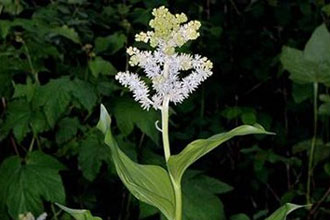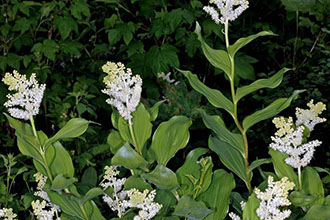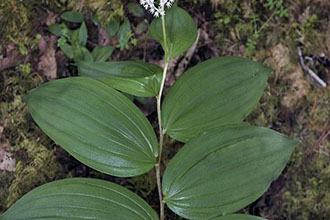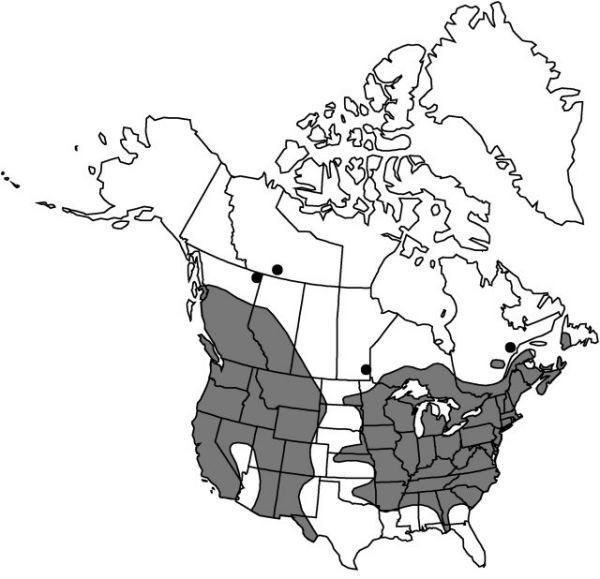Taxonomy: Kingdom - Plantae (plants). Subkingdom- Tracheobionata (vascular plants). Superdivision - Spermatophyta (seed plants). Division - Magnoliophyta (flowering plants). Class - Liliopsida (monocotyledons). Subclass - Liliidae. Order - Liliales.
Family - Liliaceae (lily). Genus - Maianthemum F.H. Wigg. (mayflower). Species - Maianthemum racemosum (feathery false lily of the valley).
Ecology: Moist, open woodland, streambanks; < 2000 m. Northwestern California, Cascade Range, Sierra Nevada, Central Western California, Transverse Ranges; to Alaska, eastern North America. Mar-Jul. Feathery false Solomon's-seal is a common wildflower of moist deciduous forests throughout New England. It was widely used by Native Americans for medicinal purposes, especially the root. The ripe fruits are edible.
Rhizome: 5-10 mm diam.
Stem: 30-90 cm, glabrous to finely hairy above.
Leaf: >5, 7-20 cm, ovate to oblong-elliptic, acute to acuminate, glabrous to finely hairy abaxially; petioles 0.



